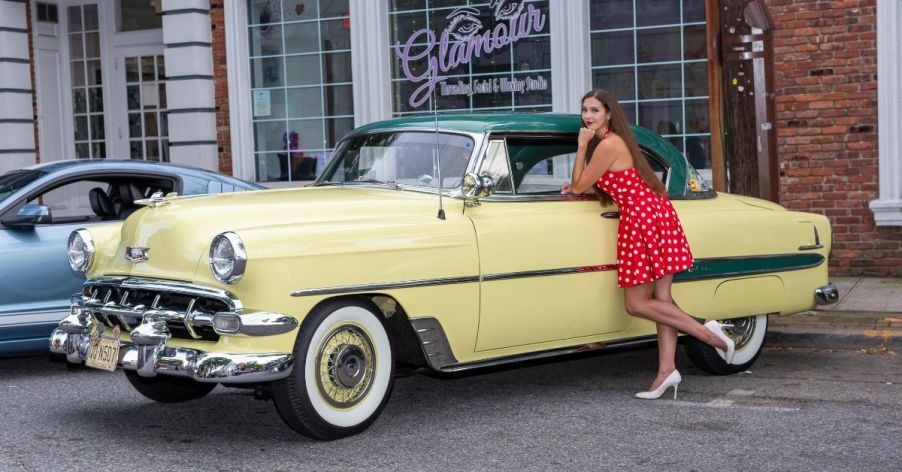
15 Tips To Keep Your Classic Vehicle In Top Shape

Caring for a classic car is preserving a piece of history. These rare and valuable cars require extra attention to ensure they remain in top condition. Unlike modern cars, classics can be more sensitive to wear and tear due to their age and unique craftsmanship. Luckily, following the proper maintenance tips can help extend your vehicle’s life and keep it looking and running like the masterpiece it is.
Drive It Occasionally

Taking your car out for a short drive once or twice a month keeps the engine lubricated, prevents seals from drying out, and ensures the tires stay properly inflated. Driving also keeps the battery charged and allows the brakes to function properly by preventing rust on the rotors.
Use Proper Driving Techniques

Driving a classic car requires a different approach than driving a modern vehicle. These cars often lack the advanced safety features and refined handling of newer models, so it’s important to use careful driving techniques. Avoid aggressive driving, hard braking, and aggressive acceleration, as these actions can unnecessarily strain the engine, transmission, and brakes.
Clean And Wax Regularly

Regular cleaning and waxing are key to preserving your classic car’s appearance. Dirt, bird droppings, and contaminants in the air can ruin your car’s paint and chrome over time. Wash the car with a soft cloth and pH-balanced automotive soap and dry it thoroughly with a microfiber towel to prevent water spots.
Keep It Stored Properly

Proper storage is crucial for maintaining your classic car’s condition, mainly if it’s not used for long periods. Store it in a climate-controlled garage where humidity and temperature are stable. Too much moisture can cause rust and damage to the interior, while extreme temperatures can warp parts and cause seals to deteriorate.
Maintain Fluid Levels

When was the last time you checked fluid levels on your classic car? Classic cars often have older engines and components that can be sensitive to fluid breakdown over time. To keep everything running smoothly, inspect and change the oil, brake fluid, coolant, and transmission fluid regularly, and use high-quality, manufacturer-recommended fluids.
Inspect Tires And Brakes Frequently

Your classic car’s tires and brakes are critical to its safety and performance. Tires can lose air pressure over time, especially if the vehicle is in storage, so check the pressure regularly and inflate them to the correct levels. Bleed the brakes and replace the fluid as necessary to ensure proper stopping power.
Monitor The Battery

Since classic cars often sit unused for long, the battery usually gets drained. To prevent this, disconnect the battery if you know the vehicle will be parked for an extended time, or use a battery tender to maintain a steady charge without overcharging. Regularly clean the terminals to prevent corrosion and ensure the battery is securely mounted.
Grease Moving Parts

Pay attention to parts like the driveshaft, which may require greasing with a grease gun. Proper lubrication reduces wear and tear on mechanical components, ensuring they last longer. Over time, these parts can become stiff or rusted. Regularly apply grease or lubrication to all moving parts, including door hinges and suspension components, to keep them operating smoothly.
Replace Old Rubber Seals

Over time, the rubber seals around windows, doors, and the trunk can become brittle and crack, leading to water leaks and increased wind noise. Check and replace them regularly if they show signs of wear, such as cracking or hardening. Rubber seals are essential for keeping out moisture, which can lead to rust and interior damage.
Inspect Wiring And Electrical Components

Electrical systems in classic cars can be particularly vulnerable due to age and outdated technology. Regularly inspect all the car’s wiring for signs of damage, such as corrosion and fraying, which can cause electrical shorts or failures. Also, check the car’s lights, indicators, and electrical components, like the radio and gauges, to ensure everything functions properly.
Perform Regular Engine Checks

A classic car’s engine is the heart of its performance, and regular checks are essential to keep it running smoothly. Check for leaks around the engine bay, inspect hoses and belts for cracking signs, and ensure the air filter is clean and in top condition.
Check And Replace Suspension Components

Due to age and use, classic cars’ suspension systems are often more vulnerable to wear. Check your car’s shocks, springs, and bushings regularly and replace any worn or damaged parts. If you plan on driving your classic regularly, consider upgrading to modern bushings or suspension components.
Join A Classic Car Community

Maintaining a classic car can sometimes feel overwhelming, but joining a community of enthusiasts can make it much easier. Online and local clubs offer a wealth of knowledge, tips, and resources. You can share experiences, ask for advice on specific maintenance tasks, and even find parts or recommended service shops.
Preserve Original Documentation And Parts

Originality is often a major factor in classic cars’ value and appeal. Preserve all original documentation, including the owner’s manual, sales receipts, and service records, as these can add significant value to the car. If you replace any parts, consider keeping the originals, as they can be restored later or serve as historical pieces.
Keep Detailed Maintenance Records

Staying organized with a maintenance log is essential for classic car ownership. Keep a record of all services, repairs, and part replacements. This helps you keep track of what’s been done and makes it easier to schedule future maintenance. Additionally, having a comprehensive maintenance history can increase the car’s value if you ever decide to sell it.


